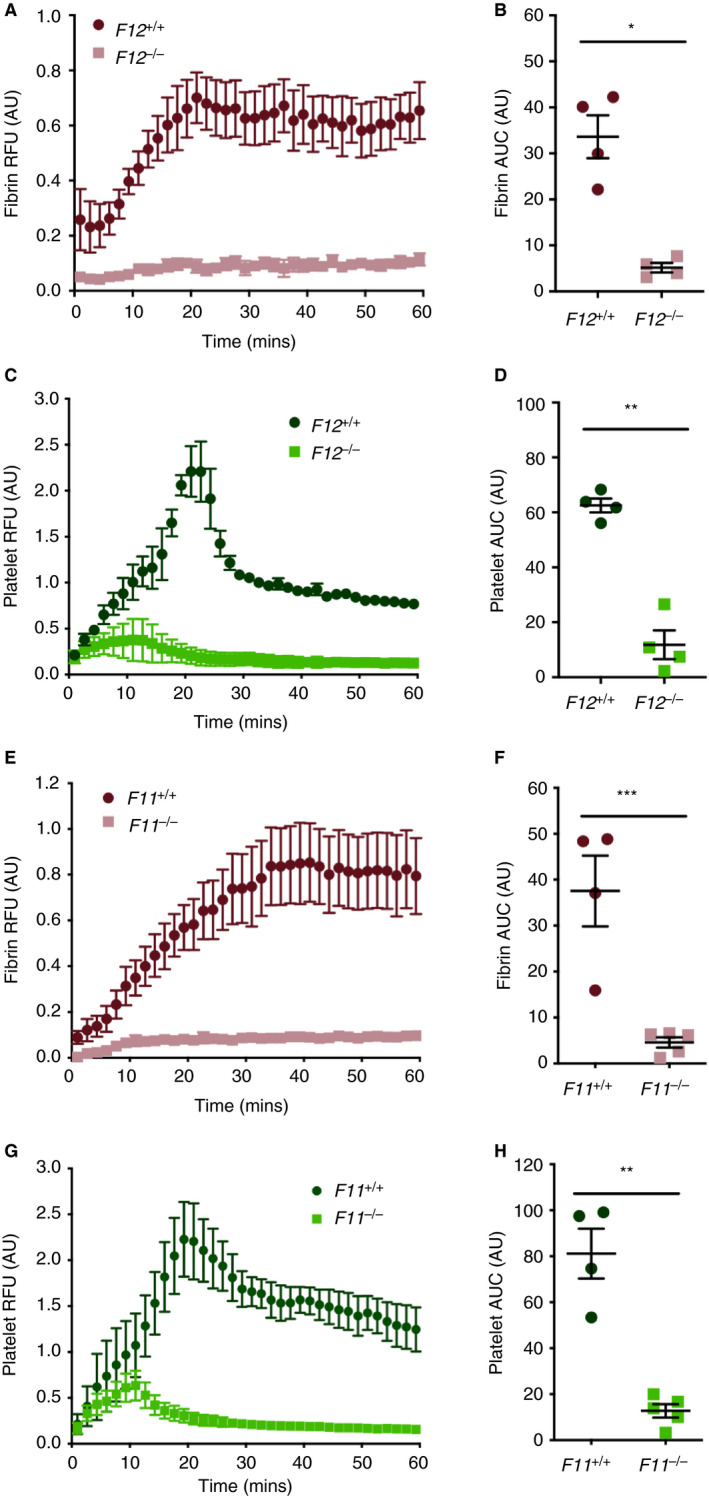FIGURE 4.

Effect of FXII or FXI deficiency on venous thrombus formation in the mouse femoral vein electrolytic model of thrombosis. Thrombus formation in F12 −/− and F12 +/+ controls was assessed using the femoral vein electrolytic injury model (n = 4 per group). A, A marked reduction in temporal accumulation of fibrin was observed. B, Area under the curve measurements demonstrated a significant decrease in total fibrin accumulation at the site of injury in F12 −/− mice compared with F12 +/+ controls. C, Similarly, a marked reduction in temporal platelet accumulation was observed in F12 −/− compared with F12 +/+ controls. D, Area under the curve measurements demonstrated a significant decrease in total platelet accumulation at the site of injury in F12 −/− mice compared with F12 +/+ controls. Thrombus formation in F11 −/− and F11 +/+ controls was assessed using the femoral vein electrolytic injury model (n = 4‐5 per group). E, A marked reduction in temporal fibrin accumulation was evident in F11 −/− mice compared with F11 +/+ controls. F, Area under the curve measurement demonstrated a significant reduction in total fibrin accumulation. G, A marked reduction in platelet accumulation was also observed in F11 −/− mice compared with F11 +/+ controls. H, Area under the curve measurements revealed a significant reduction in total platelet accumulation in F11 −/− mice compared with F11 +/+ controls. *P < .001, **P < .0001, ***P < .01 Student t test. Data represented at mean ± standard error of the mean
